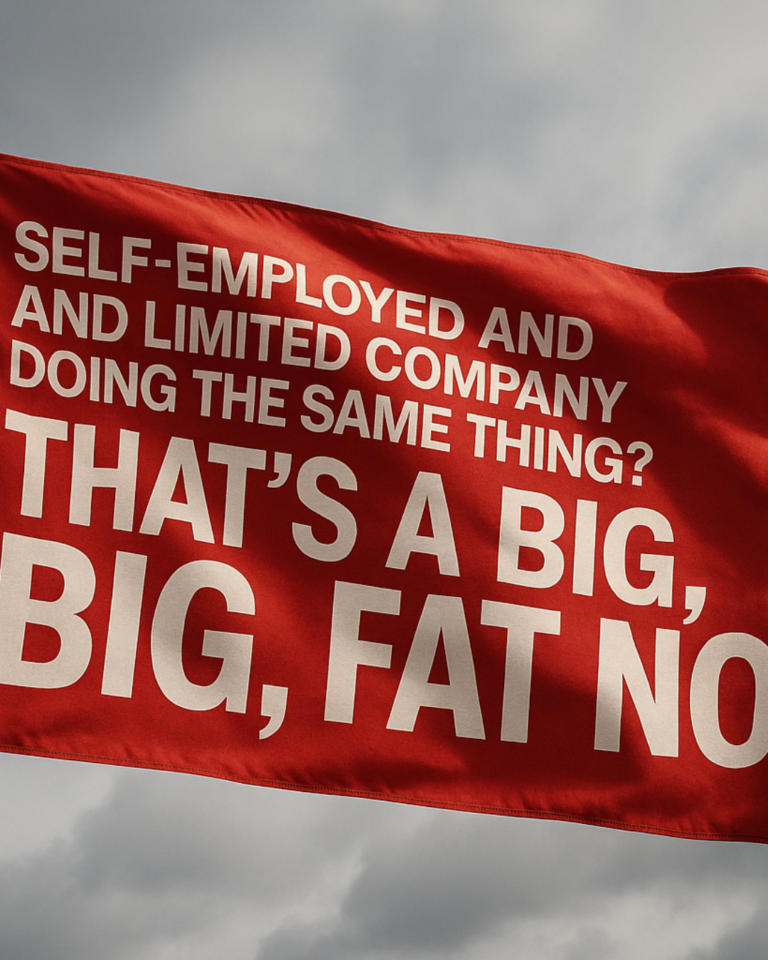Let’s set the scene.
You’ve got a limited company.
And then you think — hang on — maybe I’ll set up as self-employed too.
Double the setups, double the fun, right?
Wrong.
If you’re doing the same activity in both structures — you’re basically waving a big red flag at HMRC saying: “Please come audit me. I dare you.”
“But Kasia, I thought I could run my invoices through the company and keep the cash work separate?”
Sure… if you’re looking to star in HMRC’s next investigation case study.
Here’s why it’s a problem:
🔸 Splitting income – If you’re doing the same job under two different hats, it can look like you’re trying to spread your earnings to dodge tax thresholds or sneak under VAT registration. Spoiler alert: HMRC hate that.
🔸 Confused expenses – Which hat were you wearing when you bought that laptop again? The lines get blurry. Blurry lines = trouble.
🔸 Risk of double taxation or missed liabilities – It gets messy. Fast. And not the kind of mess you can tidy up with a spreadsheet and a scented candle.
This isn’t about doing multiple things (which is fine, by the way — you can be a dog walker and sell handmade candles, go wild). It’s when you’re doing the same thing twice in different wrappers that the problems start.
So before you set up your business alter ego, ask yourself:
Am I doing this to build something smarter — or just to try and “outsmart” tax?
Because one of those is smart.
The other… will cost you.






